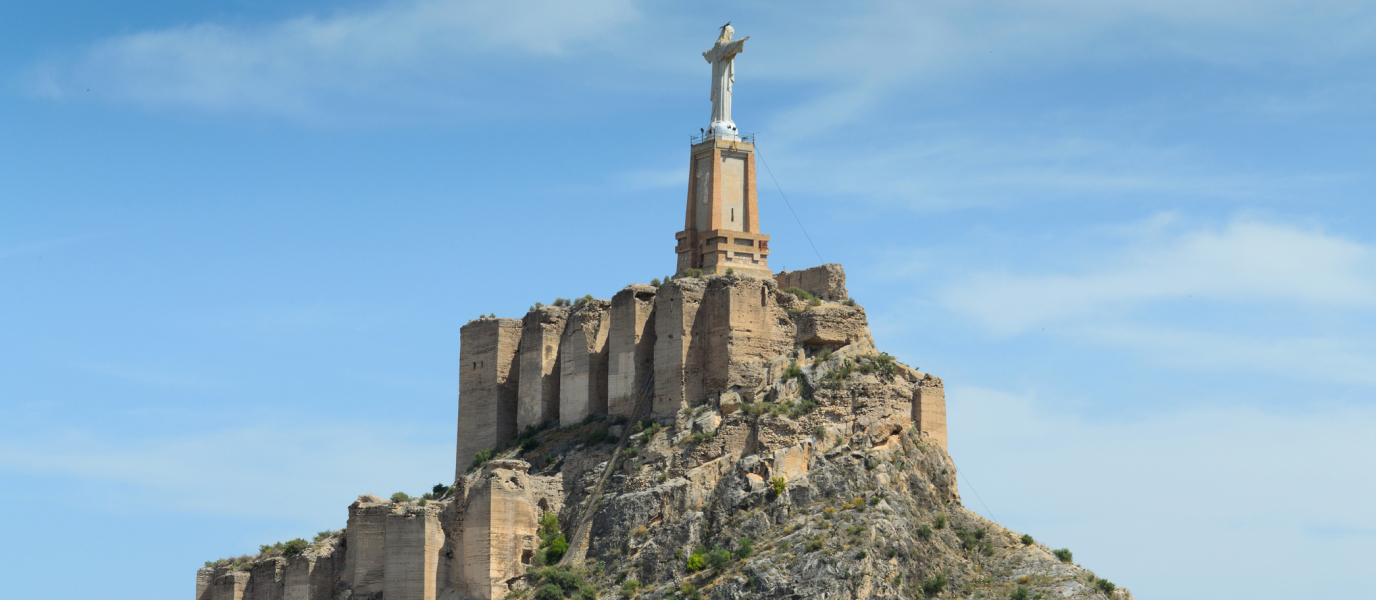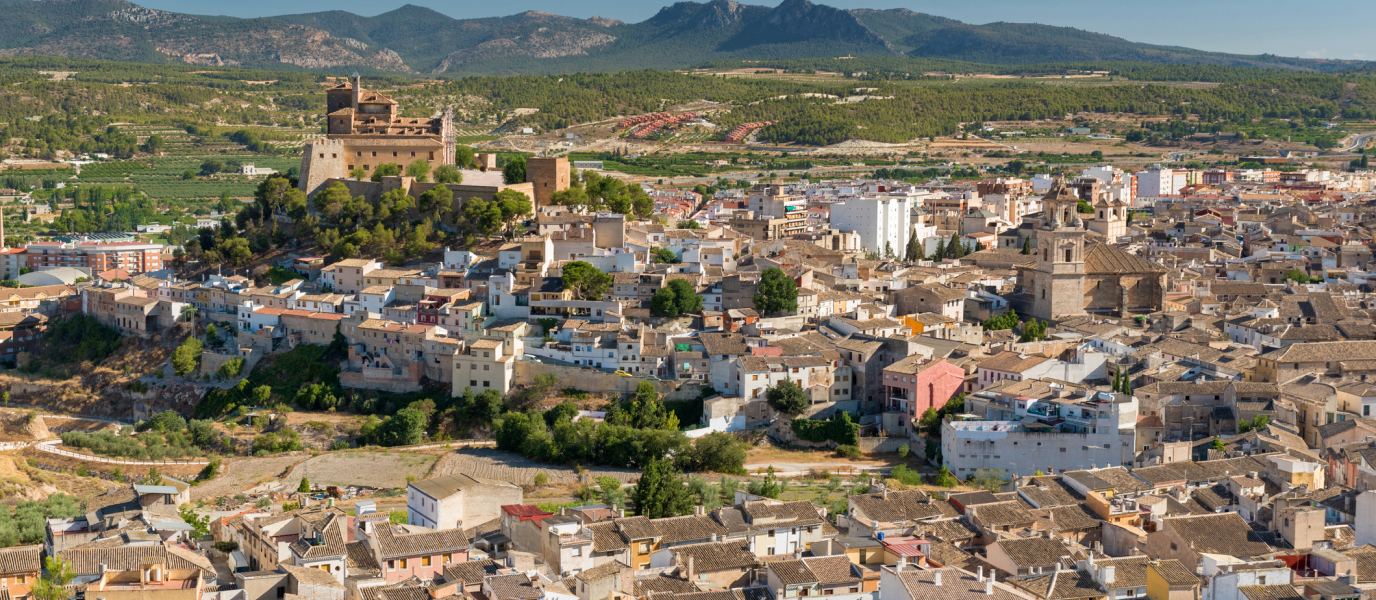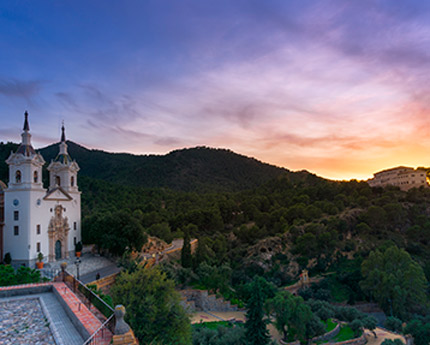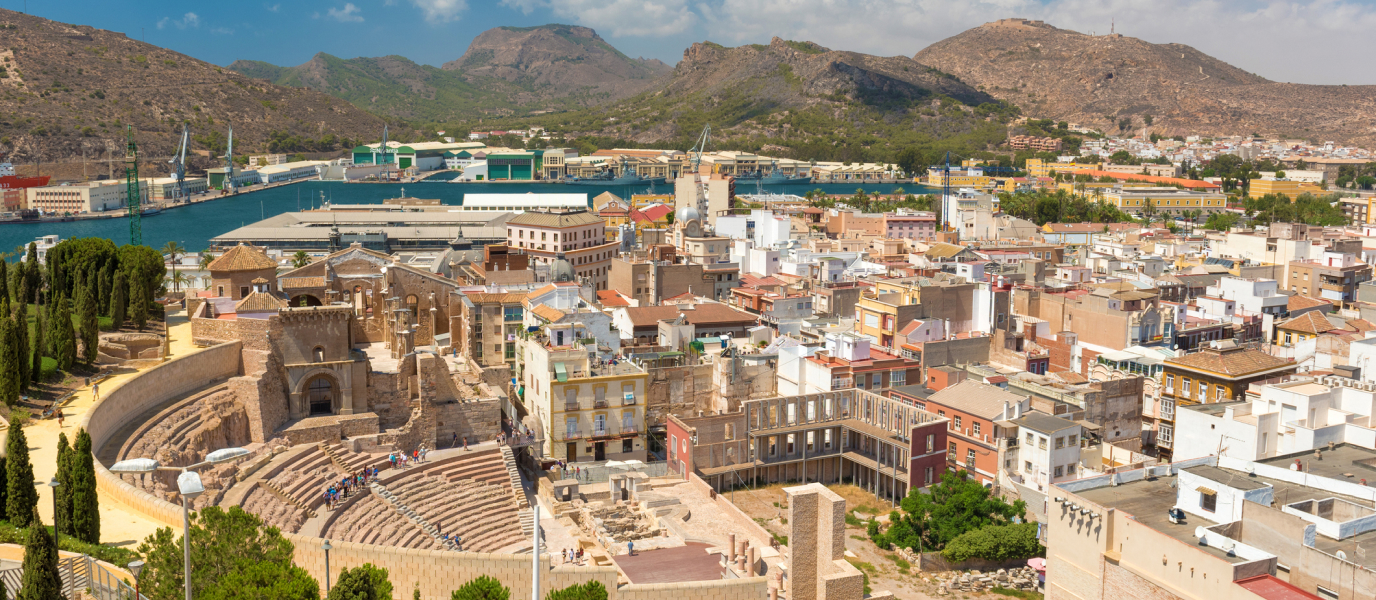The rock on which the castle stands, 149 metres above sea level, dominates the whole of the Huerta de Murcia region. From afar it can easily be distinguished, due to an enormous Christ statue installed in 1951, costing 30,000 pesetas, financed by figures from Murcian society. A previous Christ statue was actually erected in 1929 but was destroyed during the Spanish Civil War.
Aside from this icon, the castle holds many secrets related to Murcia’s power and history. The earliest remains of a watchtower on the site date from the eleventh century, during Muslim rule. But it was not until the thirteenth century that Murcia became a flourishing kingdom and, with it, came construction of Monteagudo castle, which was even mentioned by the Arab poet Hazim al-Qartayanni in Qasida maqsura.
With the Christian reconquest, the region fell under Castilian rule and King Alfonso X the Wise set up his residence at the castle, preferring it over other castles in the city. During this period, the battlements became the launching point of the Castilian border with the Kingdom of Aragon.
History of Monteagudo castle
Monteagudo has always been the point of defence of Murcia’s north-east border with the Orihuela region. In fact, the castle began as a way of protecting taifa kingdoms in the eleventh century, when the earliest references to the site are made, thanks to its strategic position in Huerta de Murcia.
Its current layout, however, comes from the remodelling that took place in the twelfth century during the Mardanish period. Next to the castle, King Ibn Mardanish created a recreational fortress, these days known as the Castillejo de Monteagudo, and the so-called Larache fort, a complete defensive line of which only remains can be seen today.
A key date in the history of Monteagudo castle was, without a doubt, the year 1243, when Murcia became part of the Crown of Castle and Alfonso X the Wise chose it as his Murcian residence. The entire complex was entrusted to his wife, Violant of Aragon.
With the outbreak of the conflict between Castile and Aragon, of which the nearby Orihuela formed part of its territory, Monteagudo castle became the kingdom’s first line of defence and one of its most important.
In fact, the complex continued to be key in a military sense until the fourteenth century, eventually losing importance when hostility between the two crowns ceased.
Visiting the castle
Neither the Christ statue or the castle are open to the public and you must make do with seeing them from the outside, although making your way there is well worth the effort to enjoy the views that made it so important.
A viewpoint has been set up half-way up the hill, from where you can view most of the defensive complex that captivated Alfonso X the Wise and instilled fear in enemy troops.
What is open to the public is the Visitor Centre situated at the base of the castle and various marked hiking routes that go around the complex, giving you different perspectives of the castle.
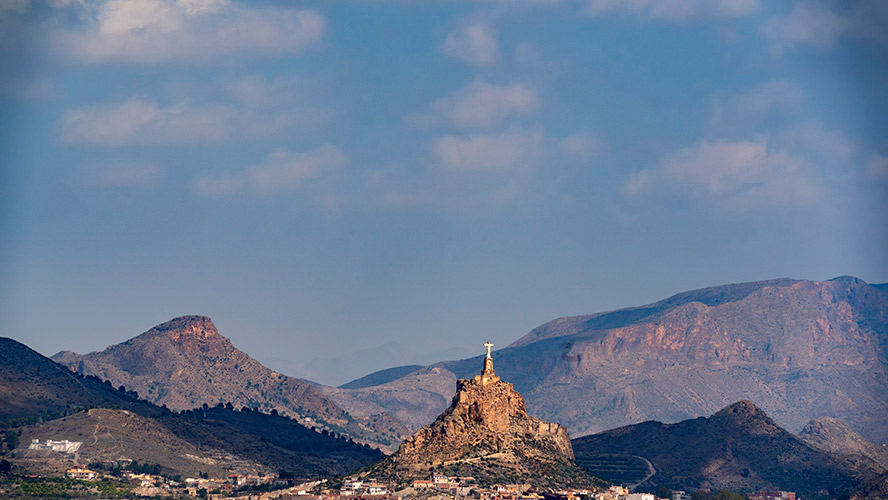
Monteagudo interpretation centre
This centre is situated at the base of Monteagudo castle, from where all of the walking tours are organised as well as providing information on the complex and its history since the presence of the area’s earliest settlers, the Argaric, Iberians, Romans and Arabs and the Christian reconquest.
The main guided tour covers just over three kilometres on foot to give you a better understanding of all of Murcia’s defensive line and its means of subsistence: castles and fortresses, watering systems and water tanks built in the period in which the castle was expanded, in the thirteenth century. This simple route covers the most emblematic places along the defensive line.
In the centre, the history of the castle, which is a National Heritage site, is pieced together through archaeological remains, recreations, models and dioramas. Each one of the rooms displays part of the remains found in the excavations that took place around the castle, enabling some of the typical scenes that occurred in its interior to be recreated.
Entrance is free and it is open to the public everyday except Mondays, when it is closed. On Sundays it only opens from 10 am to 2 pm.
Trails leading to the castle
The main castle trail is a circular route spanning around six kilometres that covers the main places in the area such as Monteagudo castle itself, the castillejo and Larache fort. It also passes the Arab water tanks built in the thirteenth century, which allow you to view the traditional medieval irrigation system, and the recreational estates that were built next to the two smaller complexes.
The trails starts at the Visitor Centre and takes around two hours to complete. It has a gradient of just 60 metres, which means you can do the route with the whole family.
Where to stay in Murcia
Monteagudo castle is just five kilometres from Murcia, which means the four-star Occidental Murcia Siete Coronas is a perfect option, owing to the renovation work that has made it one of the most modern hotels in Murcia.
Situated on Paseo de Garay, right in the city centre, it makes a perfect base for visiting the city’s main sights or for taking a walk along the Segura river. It is also very well connected with other parts of the city and further afield, allowing you to move around the rest of the region at ease.
Many of its 156 rooms have views of the city and guarantee a pleasant stay complemented by the most efficient service.
The Occidental Murcia Siete Coronas also has a gym, multifunctional meeting rooms equipped with the latest technology and a magnificent restaurant called Bistro with its own terrace. It also offers a parking service and accepts pets.
The Occidental Murcia Siete Coronas transmits like no other hotel the essence of the city of Murcia, which combines the finest culture and modernity without forgoing the tradition and crafts learned along the way.




































































